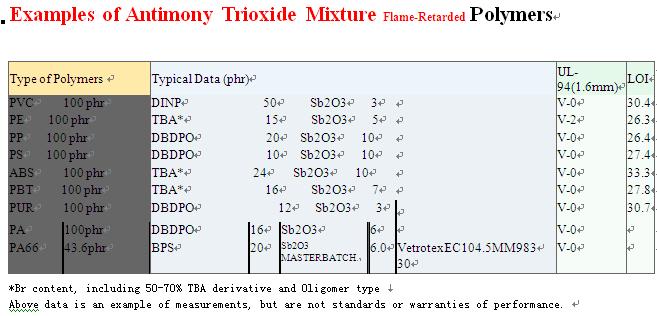

Zinc Borate has been used extensively in flexible PVC as a partial replacement for antimony oxide, such as wall coverings, wire and cables, roofing membranes, conveyor belts, carpet backing, auto upholstery, and tenting materials.
In contrast to antimony trioxide, this material has a refractive index similar to that of most polymer systems, which allows the use of lower pigment loading.
See formulation with flexible PVC
Recommendations for levels of treatment depend on the desired fire test performance, plasticizer level, filler content, etc.
A good starting point is replacing 30-60% of the antimony oxide in your existing formulation with Firebrake® ZB. If this results in equal or improved fire test performance, one can work toward complete replacement.
For greater smoke reduction, a high ratio of Firebrake® ZB to antimony oxide is preferred.
For better combined flammability and smoke test performance, it is beneficial to use Firebrake® ZB in conjunction with alumina trihydrate (or magnesium hydroxide) and antimony oxide.
Figure 1 shows that in the presence of alumina trihydrate (ATH), there is a dramatic synergism between Firebrake® ZB and antimony trioxide. This synergism is observed at a total loading as low as 3 phr.
Figure 1 : Oxygen index of flexible PVC formulations (ASTM D 2863)
Figure 2 shows: In the presence of alumina trihydrate (ATH), Firebrake® ZB reduces smoke effectively, even when used with antimony trioxide. In the absence of ATH, a high ratio of Firebrake® ZB to antimony trioxide is recommended for low smoke formulations.
Figure 2 : NBS Smoke test of flexible PVC (ASTM E662)
For more information about the use of Zinc Borate in PVC, contact our technical expert via TechDirect.
消息來源








0 comment:
Post a Comment